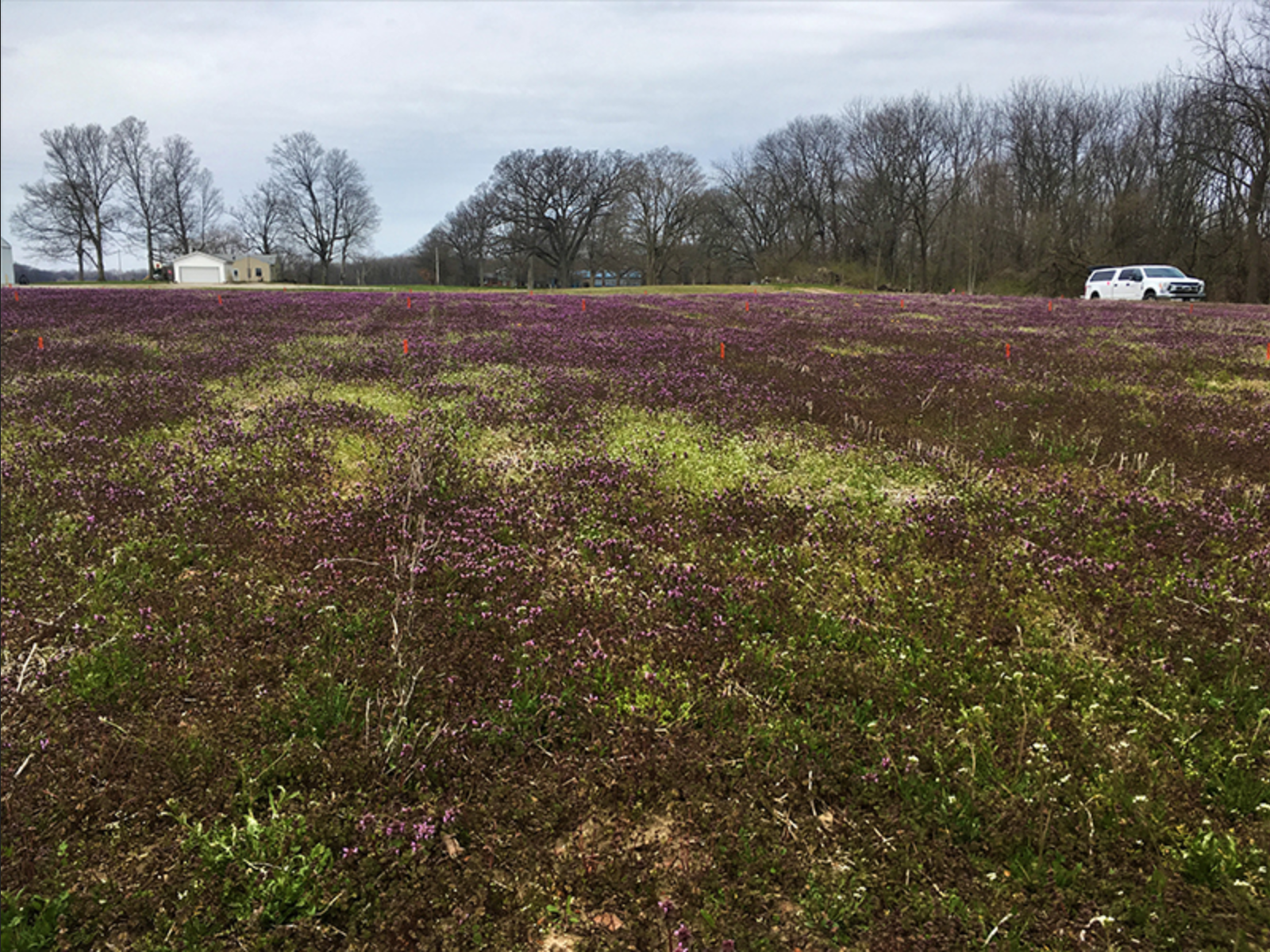Picture of the Week
December 13, 2021
Henbit and purple deadnettle: common winter annual weeds in Indiana
Marcelo Zimmer, Weed Science Extension Specialist
Department of Botany and Plant Pathology, Purdue University
Henbit (Lamium amplexicaule) and purple deadnettle (Lamium purpureum) are winter annual weeds in the mint family (Lamiaceae) that are very noticeable in the field during the spring. Around April the plants flower to form beautiful patches of purple color. These weeds tend to grow in disturbed soils and/or soils with reduced residue cover, including fields, gardens and alongside buildings. Although these weeds can provide some degree of erosion control and nutrient cycling, the biomass produced in the spring can delay drying of soils. Therefore, weed control in a timely manner prior to crop planting is necessary to facilitate planting operations.
Identification of henbit and purple deadnettle can be challenging. Both species have square stems, characteristic of the mint family; however, henbit have sessile leaves in the reproductive stems (leaf attached directly to the stem), while purple deadnettle leaves are bore on petioles. Purple deadnettle leaves are also more triangular and have shallow lobes when compared to henbit. In addition, the upper leaves of purple deadnettle are often red to purple tinted, unlike henbit leaves.
Click image to enlarge




